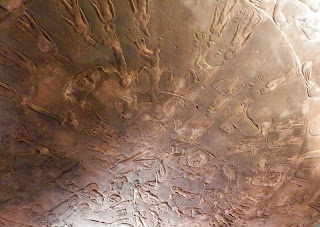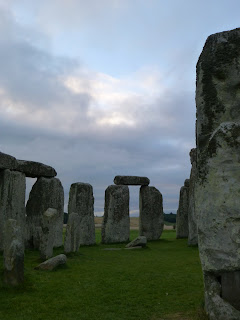Ghar Dalam
One of the most fascinating things about Malta is the layers and layers of history you may explore! At Ghar Dalam, you can go way back, to the skeletal remains of Pleistocene dwarf elephants and hippopotamus that went extinct 180,000 years ago.
In a paleontologist's dream of a collection, there are bones of everything from domesticated animals, to ancient deer that have been extinct for 18,000 years, to foxes and bears! The bones are the remains of animals that became stranded on Malta at the end of the Ice Age. It's an older visitor's center that could be made more appealing by updating, but if you are fascinated by prehistoric remains, you won't be disappointed.
Pronounced "ar dàlam" in Maltese, meaning "Cave of Darkness", Ghar Dalam is also home to the earliest evidence of human settlement, dating back 7400 years. The museum/visitor center used to display a skull of a Neolithic child and the tusks of an ancient elephant species, but they were stolen 35 years ago; which is still a sore subject among the locals, and I can't blame them, having lost such precious treasure.
After viewing the extensive remains, you walk out the back and down a stairway to the entrance to the massive cave. It's at once apparent how early human settlers chose it as a safe haven.
The area surrounding is a patchwork of terraced yards and old look-out towers, a hold-over from the many invasions of the island--one here a knight's era, another from World War II.
The terracing and patchwork are necessary, for the arable soil on Malta is so thin, that it is prone to washing away in the winter rains, so rocks have been piled up to contain the soil.

Capers grow in the area, with pretty flowers; capers being collected by the local people to bottle and sell for cooking uses.
Inside the cave you marvel at the stalagmites and stalactites formed by water seeping through the layers of limestone. You can't actually walk very far into the cave, but you can see some of the excavation sites and items in situ.
Projecting myself back into early human times, when safety and survival were linked to finding shelter in a harsh environment, I can imagine this cave providing for many needs, deep inside the womb of Mother Earth. There was ancient cave art discovered here, among the stalagmites; hand prints and rudimentary animal figures.
Outside, the rock has also been carved by the elements into formations that mimic the feminine form; the bottom picture reminded me of the Madonna and child echoing back to a time when the Great Mother may have been venerated for her many gifts.
In a paleontologist's dream of a collection, there are bones of everything from domesticated animals, to ancient deer that have been extinct for 18,000 years, to foxes and bears! The bones are the remains of animals that became stranded on Malta at the end of the Ice Age. It's an older visitor's center that could be made more appealing by updating, but if you are fascinated by prehistoric remains, you won't be disappointed.
Pronounced "ar dàlam" in Maltese, meaning "Cave of Darkness", Ghar Dalam is also home to the earliest evidence of human settlement, dating back 7400 years. The museum/visitor center used to display a skull of a Neolithic child and the tusks of an ancient elephant species, but they were stolen 35 years ago; which is still a sore subject among the locals, and I can't blame them, having lost such precious treasure.
After viewing the extensive remains, you walk out the back and down a stairway to the entrance to the massive cave. It's at once apparent how early human settlers chose it as a safe haven.
The area surrounding is a patchwork of terraced yards and old look-out towers, a hold-over from the many invasions of the island--one here a knight's era, another from World War II.
The terracing and patchwork are necessary, for the arable soil on Malta is so thin, that it is prone to washing away in the winter rains, so rocks have been piled up to contain the soil.

Capers grow in the area, with pretty flowers; capers being collected by the local people to bottle and sell for cooking uses.
Inside the cave you marvel at the stalagmites and stalactites formed by water seeping through the layers of limestone. You can't actually walk very far into the cave, but you can see some of the excavation sites and items in situ.
Projecting myself back into early human times, when safety and survival were linked to finding shelter in a harsh environment, I can imagine this cave providing for many needs, deep inside the womb of Mother Earth. There was ancient cave art discovered here, among the stalagmites; hand prints and rudimentary animal figures.
Outside, the rock has also been carved by the elements into formations that mimic the feminine form; the bottom picture reminded me of the Madonna and child echoing back to a time when the Great Mother may have been venerated for her many gifts.










Comments